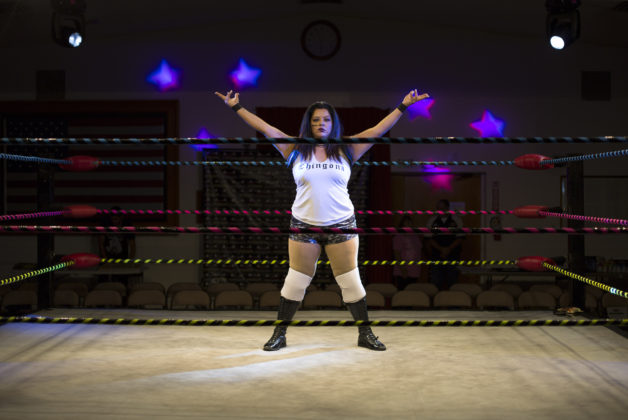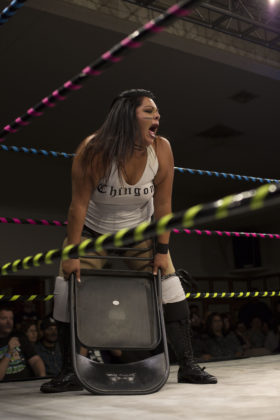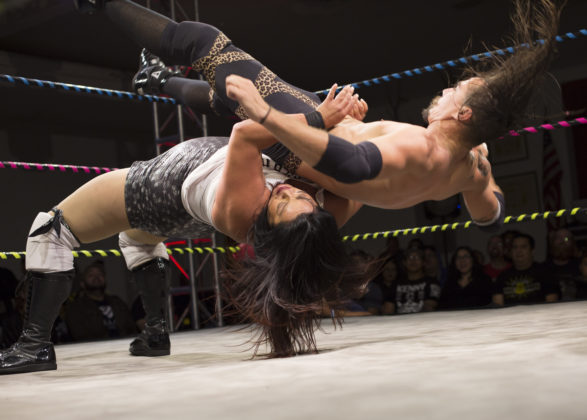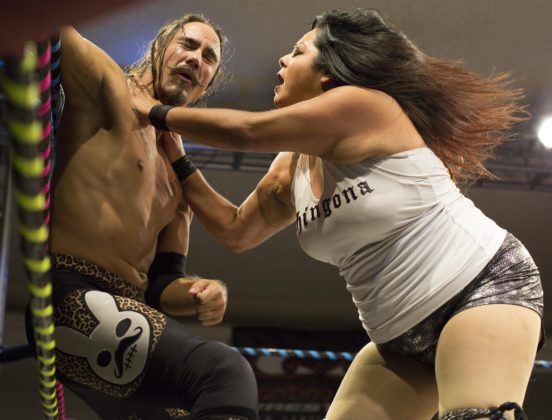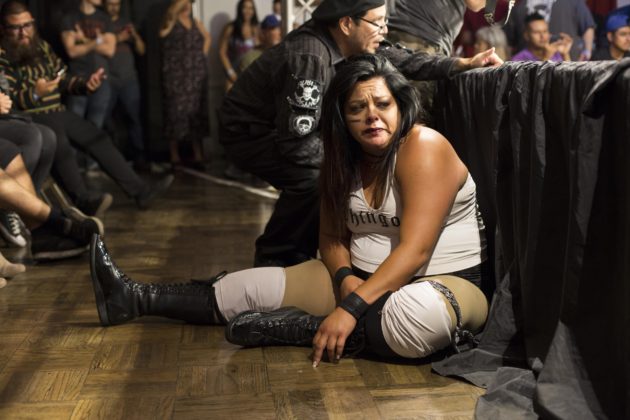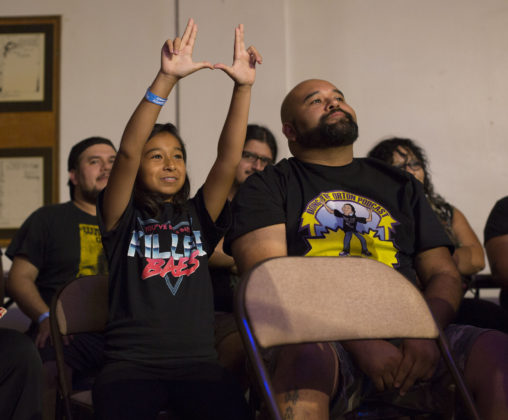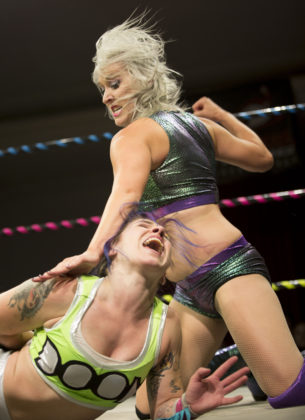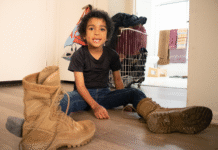The days of divas are done.
No longer are the women of professional wrestling considered a side act and merely eye candy. They are now looked at for their athleticism and in-ring prowess on the same level as their male counterparts.
This summer, World Wrestling Entertainment, the largest and most well known wrestling company, held the inaugural Mae Young Classic, a women’s tournament featuring talent from around the globe.
Prior to the start of the first night, WWE Executive Vice President of Talent, Live Events and Creative Paul Levesque, better known to wrestling fans as Triple H, addressed the fans, talking about the discrepancy between the sexes in wrestling. While both male and female competitors make the same sacrifices, historically there is a lack of payout for female competitors.
“The women saw what happened in that ring and they thought ‘I’ll sacrifice everything to live that dream, for one shot to ride that rainbow,’” Levesque said. “And they rode that rainbow even though there was no pot of gold. Until now.”
The women’s revolution began before the WWE coined the phrase. On the independent circuit, the popularity has been swelling for years. Multiple all-female promotions have popped up, and other promotions often feature intergender matches, truly putting the sexes on the same stage.
The main event at the Santino Bros. Heavy is the Crown is one such match.
Hours before fans fill the Downey Elks Lodge, the main event participants discuss the details of their triple threat match for the heavyweight championship. As they work out spots in the ring, discussing pacing and distance, Ruby Raze instantly stands out from her opponents Tyler Bateman and Brodi King. This is nothing new for Raze, who has earned herself the moniker “The Equal Opportunity Asskicker.”
“Everyone’s a wrestler here, there is no difference,” said Joey ‘Kaos’ Munoz, one of the founders of the Santino Bros. Wrestling Academy and 19-year veteran of the squared circle. “That’s one of the reasons that we don’t have a women’s title.”
Raze has competed in the ring for nearly four years and is the current FIST Combat heavyweight champion as well the Oddity Wrestling Alliance women’s title holder.
While many, including Raze, believe it was the indies that influenced WWE’s decision to embrace women’s wrestling, she sees the give-and-take that influences the entire industry.
“Because places like the WWE are putting a focus on women’s wrestling right now, it’s giving more of a place in the indies,” Raze said. “You see more female promotions sprouting up and you see more female matches. Before you’d only see one female match per card and it’s almost like a special attraction, but now you’re seeing places do two to three on a card.”
The image change of women’s wrestling has not only offered opportunities in the industry, but it has also brought in new, young female fans.
Robert Mejia has been a wrestling fan for years. His fandom grew as a teenager, during what was known as “the attitude era,” Robert attends shows with his 7-year old daughter Hannah frequently.
“Much better now than when I was in my teens,” Robert Mejia said. “If it was still like that she wouldn’t be watching. It’s an actual show. We’ve been to all-women shows. It’s something for her to look up to.”
Hannah Mejia has a podcast, “Doing the Orton,” on which she has interviewed many of the Southern California based wrestlers, including Raze.
Raze says that it is the interactions with these young fans that help her remember why she is in an industry that can leave its workers broken and in pain.
“It’s akin to being in a bad relationship, because you keep going back because you live it. It consumes so much of your life,” Raze said. “You’re almost not sure what’s going on, and then you see this little girl come up to you and she gives you a hug. She’s like ‘Thank you, I love watching you.’”
Wrestling wasn’t originally in Raze’s life plans. She first came around the industry while pursuing a career in visual journalism.
“Sports and music was my focus,” Raze said. “I started doing wrestling photography and was around the guys a lot.”
Raze says she began dating one of the wrestlers and began hanging around more often, always taking pictures at shows.
“One of the wrestling promoters came up to me ‘You, you’re always here you should do something in the business,” Raze said. “I kind of am I’m taking pictures. ‘No, no, no you’ve got to get out there.’”
Raze began as a manager for a three-man stable consisting of Bateman, Funnybone and Ryan Drago, who later appeared in WWE as Simon Gotch. After the group split up, Raze stayed managing Bateman.
For five years she stayed on the outside, training here and there with Bateman.
“It’s not a traditional system to just jump in wrestling and be on the road and learn off the cuff,” Raze said. “I was doing a lot of sweeping of the rings before matches and then getting in there with Tyler Bateman and whoever else would teach me.”
Her first match was a tag match alongside Bateman. After that, she had her first solo opportunity in the ring.
“I wrestled my very first singles match without a whole lot of formal training. All my training was on the road for five years,” Raze said. “That match went really well, so I decided it was time to go get real training.”
Maybe the decision shouldn’t be a surprise. Raze comes from a family of grapplers and grew up watching G.L.O.W. long before Netflix was a even a concept.
“I just come from a line of fighters,” Raze said. “My brother is a state champion wrestler. My dad was a wrestler and a boxer. My grandfather was a wrestler and a boxer. Fighting has kind of always been in the family. When I was 10 I took my first suplex by my brother.”
That first bump didn’t go so well for Raze. She remembers hitting her foot on the table, it bleeding and her screaming.
And after a few minutes she was ready to try it again.
When it came time for her formal training, Raze went to Munoz at Santino Bros. Wrestling Academy.
“I kind of had a grasp on a lot of wrestling, especially being ringside and watching it for five years,” Raze said. “I always did the stand there, listen and keep your mouth shut and ears open. So I went in there and I already knew most of what they were doing.”
Munoz remembers being impressed with Raze’s in-ring skills.
“What we simply did was just polish her off,” Munoz said. “We really didn’t have to teach her the moves, per se, maybe just the psychology of the wrestling.”
Despite her previous experience, Raze didn’t know what to expect that first day.
“I didn’t expect to go in and do 200 squats off the bat, 100 pushups and all the lunges and then do all the bumps and just start working on it,” Raze said. “Honestly it felt more like boot camp than it did wrestling.”
Ruby continued to go to school during her first years as a wrestler, but she realized where her heart was.
“I got my degree, I started using it and I decided it was soul sucking and I just wanted to wrestle,” Raze said. “So I took a bunch of bookings and I was flying around going places here and there. Working is not for me right now. I just want to be a wrestler.”
Though it may not be a regular 9-5, wrestling keeps Ruby busy all week. Her bookings are usually Thursdays, Fridays, Saturdays and Sundays, and sometimes all.
“I create my own merch, I do my own graphics and logos,” Raze said. “I try to merchandise myself and try to brand myself.”
While the training and in-ring action might have gotten easier for Raze to handle over the years, she makes no bones about the harsh grind that is working in the industry.
“It’s not sunshine and happiness. There’s a lot of hurt. There’s a lot of body aches and pain. There’s a lot of missing weddings, funerals, birthdays,” Raze said. “A lot of times you lose a lot of your real friends outside of business. Something that was said to me recently was that I feel like I got you addicted to heroin and told you to have a good life.”

